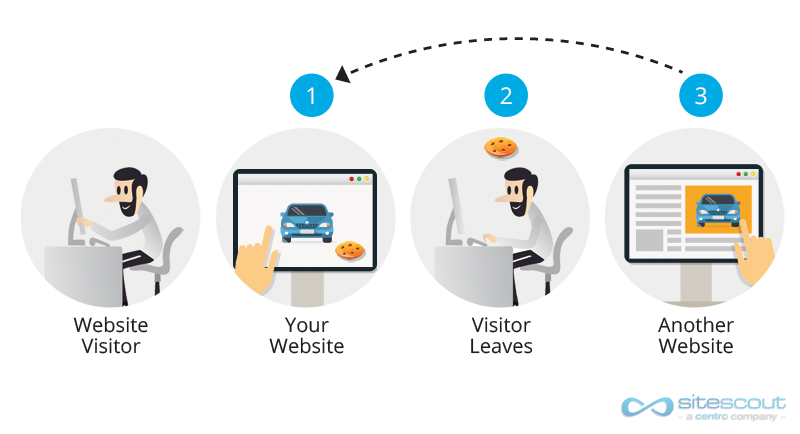Uncategorized
What Is Retargeting & Why It’s Important?
So far, you’ve worked so hard to drive traffic to your site through a number of different marketing and platforms. Nonetheless, statistics show that 98% of them will leave without making a purchase. But what if there was a way to get the visitors who don’t convert to your site again in the hope that they will convert the second time around? That’s what retargeting is all about.
It’s quite easy to grab the visitors who leave your site without completing a registration, signing up for a newsletter, or making a purchase. Rather than starting from scratch, retargeting can be an effective way of re-engaging with and converting the visitors who looked but didn’t convert the first time.
You can think of retargeting as the digital version of grabbing a customer who’s about to leave your store to give them a more personalized sales pitch. When you engage your customer in conversation to learn more about their needs, you can help them find what they’re looking for and get them to make a purchase.
What Exactly is Retargeting and Why is it Important?

Retargeting is a form of digital advertising that’s meant to entice visitors back to the advertiser’s website after they have already left. Ads are essentially shown to customers who have already demonstrated intent �” an action performed on the advertiser’s website showing that they are interested in that product and/or service.
The intent signals come from a number of different activities, with the classic example being when a customer adds an item into a shopping cart or wishlist, but doesn’t complete the purchase.
For retargeting to be effective, it makes use of a combination of targeted ad placement and tailored messaging, which capitalize on the intent signals found on the site. Display ads are then purchased on various digital marketing exchanges, and then served on blogs, websites, and other online platforms where the customer might be browsing.
As such, you can be very specific, efficient, and strategic about the kind of users you’re reaching, and where you will be spending your marketing budget. Retargeting therefore has two key benefits: maximizing ROI and keeping your brand or business in front of your prospects.
In many cases, marketers don’t think of retargeting as a tool for brand building, which presents a huge, often wasted opportunity. One of the main benefits of retargeting is keeping your brand in the minds of a targeted audience. With it, you can try to drive a direct response, or build up the familiarity of your brand with your target audience with the goal of increasing the likelihood of an indirect action in the future such as an organic site visit or Google search.
Retargeting also provides the most effective and direct means to reconnecting with the users who’ve shown interest in your products of services, recapturing their attention, and moving them further down your sales funnel.
Tips to Keep your Leads Engaged with Retargeting
- Audience Segmentation
One of the main causes of poor performance in retargeting campaigns is poor audience segmentation. When you segment your audience aptly, you can easily target each group with relevant, highly valuable content.
You can achieve this by setting up URL segments with audiences, which are defined by specific pages that they visited while browsing your site. Some of the basic segmented groups to build include:
• Homepage: this is an upper-funnel group that helps to target prospects with discount offers and other branding messages to drive new customers in the door.
• Categories pages: a mid-funnel group for users that have shown interest in a specific type of products, aimed at re-engaging them with general ads for the specific product category
• Specific product pages: a lower-funnel group for retargeting users with ads of the specific products that they have looked at already.
• Shopping Cart: These are meant for high intent users. You can target them with ads of the products they’ve looked at, along with compelling offers like free shipping to entice them to make the purchase.
- Email Retargeting
Email remarketing and retargeting, along with triggered email campaigns are some of the top-performing tools for digital marketing. They are mostly aimed at the lower-funnel activities and give visitors an opportunity to reconnect with the products or services that have captured their attention.
Sending emails to your subscribers list as part of a retargeting campaign doesn’t take much; it’s inventory is free, and it won’t require you to bid on an ad exchange for an ad placement. However, there are some limitations, like the fact that it’s not advisable to send out more than one email per day to a prospect.
A well-designed email helps to remind the user of the specific products they looked at, suggest them similar items to the ones they’ve pursued before, and sending them special offers or coupon codes.
- Smart Attributions
Attribution if the process of pinpointing a given set of user actions, touch points, or events that contribute to a desired outcome in your marketing efforts, and then assigning each of these actions a value. While it might seem a complex and rather confusing topic, it doesn’t mean that you should avoid it altogether.
At this point, it’s probably obvious that tracking the last-click (the last element a user clicked before converting) model of attribution is outdated when it comes to measuring marketing success. It basically doesn’t account for any other advertising that the user might have come across before clicking, and it often incentivizes platforms to bombard their users with ads.
There are a number of different platforms, approaches, and technologies that you can use to improve how you conduct attribution. For instance, the Blended Attribution model is the most recommended model, as it takes into accounts both clicks and the views. It also accounts for the viewing of an ad, and retains the clarity and immediacy of the last-click model.
Retargeting is a critical component of almost every digital marketing approach. With the information provided in this post, you should be able to get a lot more value from your digital marketing and retargeting campaigns, while maximizing your returns on investment.
Brett Heimann is a marketing & advertising professional with 10 years of experience. He's the founder of MarketingAgency.com and contributes to other publications such as; Entrepreneur, Thrive Global, and StockMarket.com. His passion for digital marketing began after graduating with a B.S.B.A in business administration and finance in 2013. After completing college, he went on to become an entrepreneur in the marketing and finance space. Brett loves the ability to deliver to his readers engaging and educational content that can be easily consumed by the reader. He enjoys writing about a wide variety of marketing topics such as; Search Engine Optimization (SEO), Paid Advertising (PPC), E-Commerce, and Lead Generation For SMBs to name a few. Brett, a South Florida native, enjoys spending time with his wife and two sons outdoors and is a big basketball and MMA fan.


















